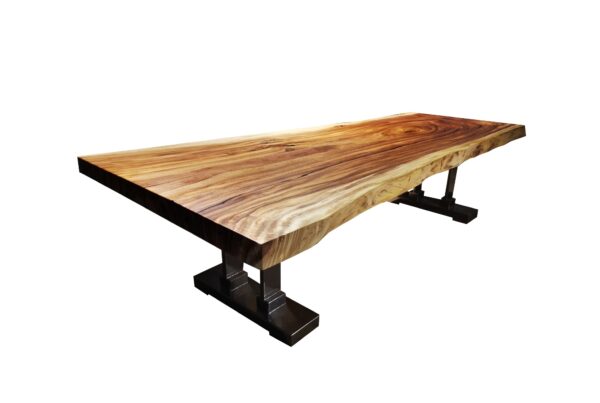
Evolution of “antique” furniture through history
The evolution of high end wood tables through history is nothing short of fascinating. What we know today as antique furniture has evolved throughout the centuries, but what exactly is antique and what qualifies as such a furniture piece?
During the eighteen hundreds the concept of furniture was introduced in the western world, although the process of its evolution is most clearly seen within the European continent. As earlier mentioned, furniture came into the world in the western world through the colonial era, with the French Revolution perhaps being the most notable event which caused the appearance of antique furniture.
Furniture in the nineteenth century
Throughout the nineteenth century the styles of furniture became increasingly decorative, with a desire to create more spacious living rooms and to create more comfortable work environments. It was during the Victorian era that the first true antique furniture pieces were produced. The Victorians were greatly impacted by the French Revolution, with many of their furniture designs coming from France.
With the Victorians gone, it was important for furniture manufacturers to not only produce more durable furniture but to also reproduce some of the same motifs that they had seen associated with French furniture design. Thus, the nineteenth century saw the birth of antique furniture and with it the beginnings of what would later become known as classic furniture.
Furniture in the twentieth century
The twentieth century saw the production of furniture also take on a more industrial design. Industrial furniture was designed to be much stronger, to help in the construction of factories and to help with the shipping of goods, both domestically and internationally. Despite all odds, handmade tables of the artisanal type were still produced and there is an abundance of amazing console tables and high end wood tables from that era that can still be found in great shape today.
However, when one looks back at antique furniture, one must ask what distinguishes it from its contemporary counterpart? With furniture, the answer can be quite difficult, particularly because over time so many different types of wood and materials have been used to make furniture. One thing that remains, however, is that antique furniture has something particular to offer; that something is the history of the wood that it is made of.
Great locations where to find unique antique furniture
For those who are interested in purchasing antique console table, handmade tables, one can often look to countries such as Madagascar, where wood is a byproduct of other industries and is then used to create this intricate furniture. Madagascar is an island nation in the eastern part of Africa, and as such, Madagascar’s furniture is made from wood that comes straight out of the earth.
This Madagascar furniture, which is commonly made with Madagascar Rosewood, or Palisander, is popular not only for its beauty but also for the fact that it is extremely durable. This furniture, due to its production rate (which is much lower than that of any other furniture), tends to be rather expensive.
Victorian furniture
Another type of furniture that is often looked to as the progenitor of all that is now known as modern furniture is the furniture crafted during the Victorian era. The key distinction between this type of furniture and antique or vintage furniture is the fact that the former tends to be mass-produced and heavily mechanized. On the other hand, the Victorian style tends to be hand crafted with more attention given to detailing and imperfections, as well as hand-painted in order to convey a certain degree of uniqueness.
Another type of furniture that is often looked to as the progenitor of all that is now known as modern furniture is the furniture crafted during the Victorian era. The key distinction between this type of furniture and antique or vintage furniture is the fact that the former tends to be mass-produced and heavily mechanized. On the other hand, the Victorian style tends to be hand crafted with more attention given to detailing and imperfections, as well as hand-painted in order to convey a certain degree of uniqueness.
|
Conclusion
by looking at the various techniques used to create furniture, one can truly understand the skills and the dedication that went into the creation of certain pieces of furniture. This type of furniture can really give one’s home a desired and unique look, allowing you to truly make a statement in your own home.
article by:
A tech enthusiast with a passion for interior design,
architecture and modern technology.










